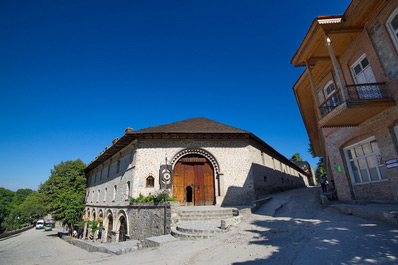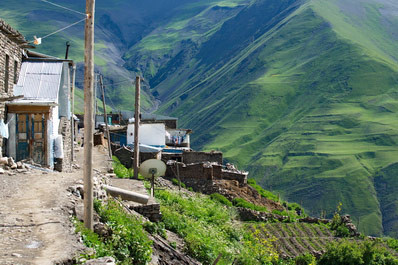UNESCO World Heritage Sites in Azerbaijan

Azerbaijan's tangible heritage unveils the richness of its history and culture through unique landmarks that draw tourists from around the globe. Beyond its natural landscapes, Azerbaijan boasts a rich heritage. Ancient cities and architectural marvels have rightfully earned their spots on the UNESCO list.
Walled City of Baku with the Shirvanshah's Palace and Maiden Tower (UNESCO-listed since 2000) is the historical core of Baku, Icherisheher (Inner City), surrounded by 12th-century defensive walls with an ancient history predating our era, as evidenced by numerous archaeological finds. It showcases the influence of various cultures, with the Maiden Tower (Gyz Galasy), built in the 12th century—though some scholars argue it was erected no later than the 1st century—as its oldest structure. Another significant architectural site is the Shirvanshahs' Palace, mainly constructed in the 15th century and located at the highest point of the old city. The palace complex includes the Divankhana, residential buildings, a mosque, Murad's Gate, a bathhouse, and several mausoleums.
Gobustan Rock Art Cultural Landscape (included in the UNESCO list in 2007) features over 6,000 petroglyphs in the semi-desert region of the Gobustan reserve, with the oldest dating back 40,000 years. These rock drawings depict men, women, the sun, totems, hunting, fishing, and much more. Also found are fragments of inhabited caves, settlements, and burials, indicating habitation since the late Paleolithic era. This site also represents cultural continuity through the ages, with petroglyphs carved even in the 1st millennium AD. The drawings are concentrated in Boyukdash, Yazilytepe, and Kichikdash.
The Historic Centre of Sheki with the Khan's Palace (added to the UNESCO list in 2019) is set near the Greater Caucasus Mountains, a four-hour drive from Baku. The city of Sheki, existing since the 1st millennium BC, is divided by the Gurjana River. The ancient northern part, built on a mountain and rebuilt after being destroyed by mudflows in 1772, features 18th-century houses with typical steep roofs, fireplaces, and merchant decor. The city also has caravanserais and trade centers restored after the mudflows, playing a crucial role as the city was a crossroads of trade routes and silk production. The most interesting is the Palace of the Sheki Khans, who came to power in 1743, reflecting various cultural influences as Sheki was under the control of different states over time.
The Hyrcanian Forests (listed in 2023) are mixed broadleaf forests, with the first trees appearing 25-50 million years ago. These forests once covered vast territories, and today they span an area estimated between 18 to 55 thousand square kilometers. Protected by UNESCO in Azerbaijan and Iran, they stretch along the Caspian Sea coast, home to over 3,200 species of vascular plants, including endemic species. The oldest trees still standing today are 500 years old. The area also provides habitat for 58 species of animals and 180 species of birds.
Cultural Landscape of Khinalig People and “Köç Yolu” Transhumance Route (included in the UNESCO list in 2023) encompasses several elements: the village of Khinalug, two types of pastures—summer ones high in the mountains and winter ones in the lowlands—connected by a 200-kilometer seasonal migration trail known as Köch Yolu (nomadic path). This mountain route is regularly used by Khinalug shepherds, practicing a blend of nomadic and sedentary lifestyles, living from one seasonal migration to another. The 200-kilometer road is organized so that, wherever one is along it, they are prepared for extreme climatic conditions. Along Köch Yolu, there are temporary pastures, stopover points, mountain springs, bridges, mosques, and cemeteries.
As part of UNESCO's World Heritage, Azerbaijan's archaeological and natural monuments preserve their significance, showcasing the continuity of generations. Azerbaijan also has elements of intangible heritage, offering a deeper insight into the nation's cultural depth.










